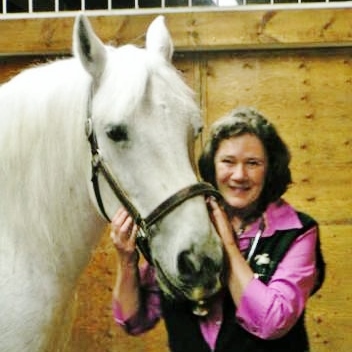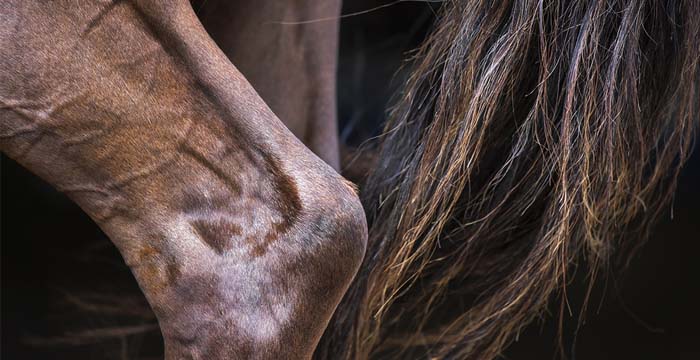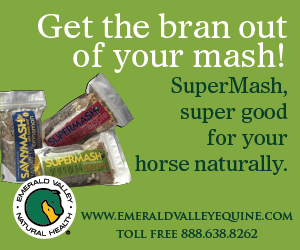From young horses to seniors, child’s mount through the upper level stars of any sport, the joints of a horse take considerable stress. The core supplements for joints in any species are glucosamine, chondroitin and hyaluronic acid. They are components of the joint cartilage and/or synovial fluid that bathe the joint space and interior of tendon sheaths and bursas. These compounds can assist the horse’s body in maintaining a normal homeostatic balance between degeneration and repair, and many horses do extremely well on them. However, there are exceptions.
The joint nutraceuticals are most supportive in situations of normally encountered stress to the joint and all surrounding tissue during typical exercise. The synovial lining is usually the first tissue to be stressed in the moving joint, with eventual production of thinner joint fluid and a compromise of cartilage integrity if the body cannot balance the stresses with healthful and robust regenerative responses.
Joint movement may also strain tendons, ligaments and their attachment to bone (the enthesis). If degenerative processes in the joint outweigh repair, the synovial membrane becomes thickened and can become pinched between the ends of the bones during exercise, bleeding into the joint cavity and irritating it further.
Cartilage also thins if normal maintenance processes cannot keep pace with the load. As cartilage thins, the cushioning effect is reduced and the joint space narrows. Bone in the area above the joint is irritated. Eventually there can be bone on bone contact rather than the protective cap of cartilage normally present. This causes further irritation and bone begins to proliferate in an attempt to stabilize the joint.
Helping the horse’s body to restore homeostasis in the face of all these processes in different tissue types may require more than the usual joint nutraceuticals. There are numerous food components, individual nutrients, and plant-based naturally occurring compounds which normally assist in maintaining homeostasis in remodeling and inflammatory pathways.
Some, like vitamin C, are necessary cofactors in tissue formation. Others are either direct antioxidants or components of key antioxidant enzyme systems. Free radical generation is an inevitable consequence of exercise and normal tissue housekeeping but when unbalanced can be harmful. Still others may normally influence specific pathways or even gene activity.
These useful substances include yucca, devil’s claw, turmeric, boswellia, goldenrod, astragalus, white willow, cat’s claw, philodendron, feverfew, eggshell membrane, hydrolyzed collagen, fatty acids, silica, boron, vitamin C, essential amino acids, B vitamins, copper, zinc, bioactive whey, MSM, resveratrol and other flavonoids abundant in brightly colored fruits.
Horses most likely to benefit from more comprehensive support are animals which are older, previously injured or working heavily. Health and performance are all about homeostasis. There are many tools in your toolbox.
Uckele Health & Nutrition, maker of CocoSoya®, offers formulas that provide support for joint health such as:
Tri-Lube Xtra supports joint mobility and comfort by supplying key ingredients in the right proportion for bone, cartilage, and connective tissue health. Broad-based support contains potent levels of the top four joint ingredients: glucosamine, chondroitin sulfate, MSM, and hyaluronic acid in a palatable powder. Vitamin C promotes collagen growth and a healthy inflammatory response.
Lubrun supports flexibility and resiliency, joint mobility, and structural integrity and function. Combines the two key joint support nutrients, glucosamine as both sulfate and hydrochloride, with chondroitin sulfate.
Hylarin B supports ligaments and tendons to help maintain the stability of joints for controlled motion. With high doses of hyaluronate and boswellian extract to support mobility and flexibility. Helps maintain the fluid between the joints and soft connective tissue.
Published in July 2020 Issue:

Dr. Eleanor Kellon, staff veterinary specialist for Uckele Health & Nutrition, is an established authority in the field of equine nutrition for over 30 years, and a founding member and leader of the Equine Cushings and Insulin Resistance (ECIR) group, whose mission is to improve the welfare of horses with metabolic disorders via integration of research and real-life clinical experience. Prevention of laminitis is the ultimate goal. www.drkellon.comMcMillanBros.HiBid.com






